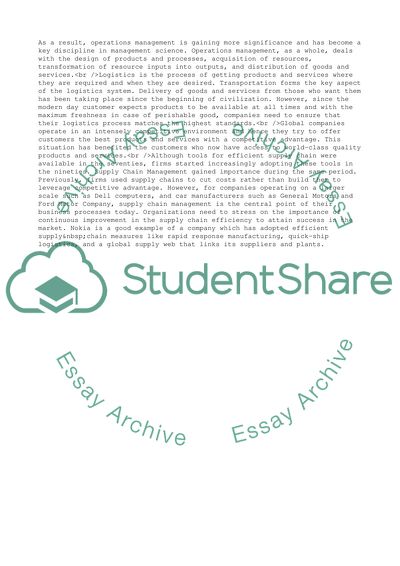Cite this document
(Operations Management Issues Term Paper Example | Topics and Well Written Essays - 2750 words, n.d.)
Operations Management Issues Term Paper Example | Topics and Well Written Essays - 2750 words. https://studentshare.org/management/1717850-transportation-demand-for-in-transit-visibility-just-in-time-inventory-and-supply-chain-management
Operations Management Issues Term Paper Example | Topics and Well Written Essays - 2750 words. https://studentshare.org/management/1717850-transportation-demand-for-in-transit-visibility-just-in-time-inventory-and-supply-chain-management
(Operations Management Issues Term Paper Example | Topics and Well Written Essays - 2750 Words)
Operations Management Issues Term Paper Example | Topics and Well Written Essays - 2750 Words. https://studentshare.org/management/1717850-transportation-demand-for-in-transit-visibility-just-in-time-inventory-and-supply-chain-management.
Operations Management Issues Term Paper Example | Topics and Well Written Essays - 2750 Words. https://studentshare.org/management/1717850-transportation-demand-for-in-transit-visibility-just-in-time-inventory-and-supply-chain-management.
“Operations Management Issues Term Paper Example | Topics and Well Written Essays - 2750 Words”. https://studentshare.org/management/1717850-transportation-demand-for-in-transit-visibility-just-in-time-inventory-and-supply-chain-management.


